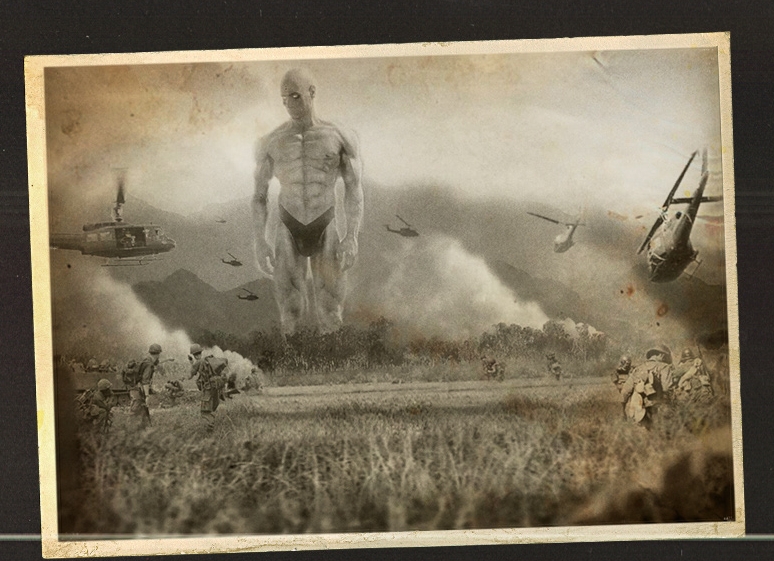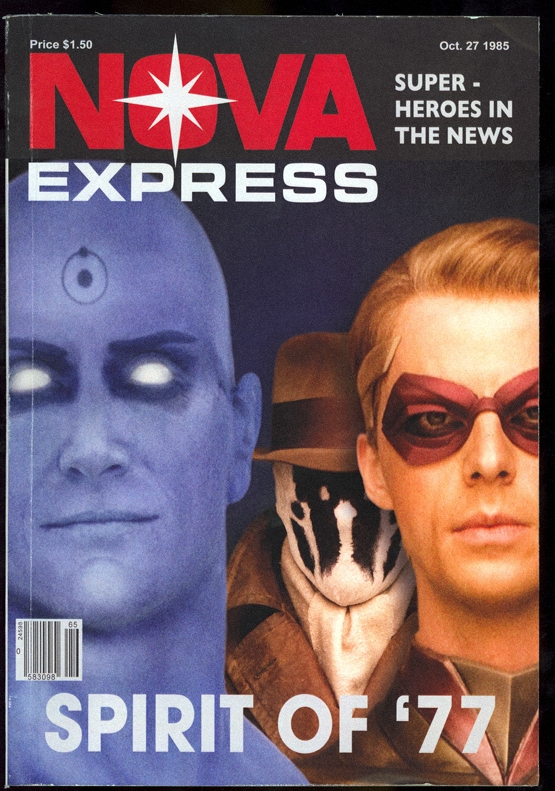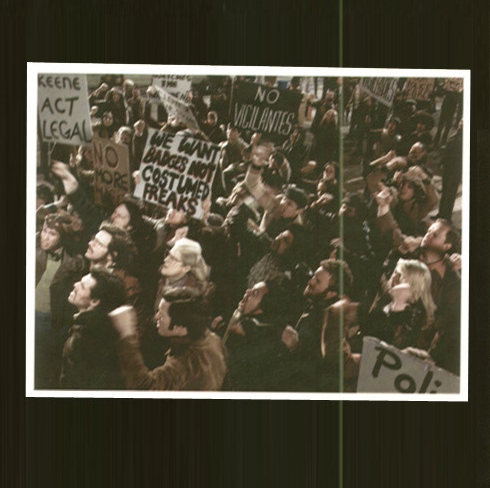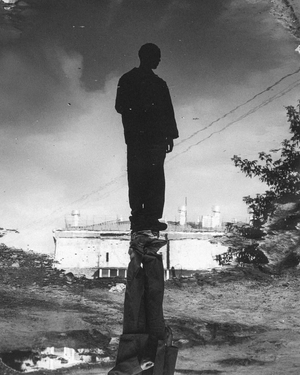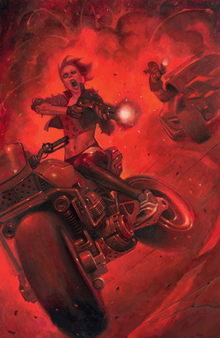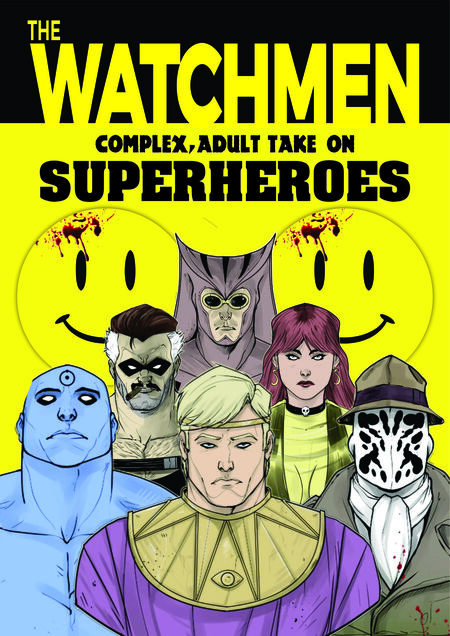
WATCHMEN: COMPLEX, ADULT TAKE ON SUPERHEROES
ALAN MOORE
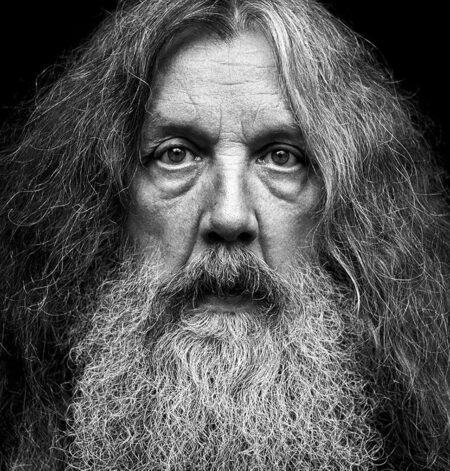
Alan Moore is acclaimed for his profound influence on comics. A British writer, born in Northampton, England, in 1953, Alan Moore is a creative comic book author whose work transformed the graphic novel genre. He is known for subverting traditional comic tropes and embedding political and social critique in his narratives. Watchmen cemented Moore’s reputation as a literary innovator in the 1980s.
In Watchmen, Moore reimagines superheroes as politically and psychologically realistic characters rather than tidy emblems by drawing on his doubts about power and nostalgia. What traumas, beliefs, and fantasies would motivate people in the real world to wear masks, he wonders, and how would governments and businesses turn them into weapons? Dr. Manhattan becomes a symbol for dehumanizing, godlike technology; Nite Owl and Silk Spectre represent midlife crisis, sexual neurosis, and the alluring comfort of heroic nostalgia; Ozymandias becomes the «enlightened» technocrat prepared to sacrifice millions; and Rorschach becomes a study in extreme moral absolutism.

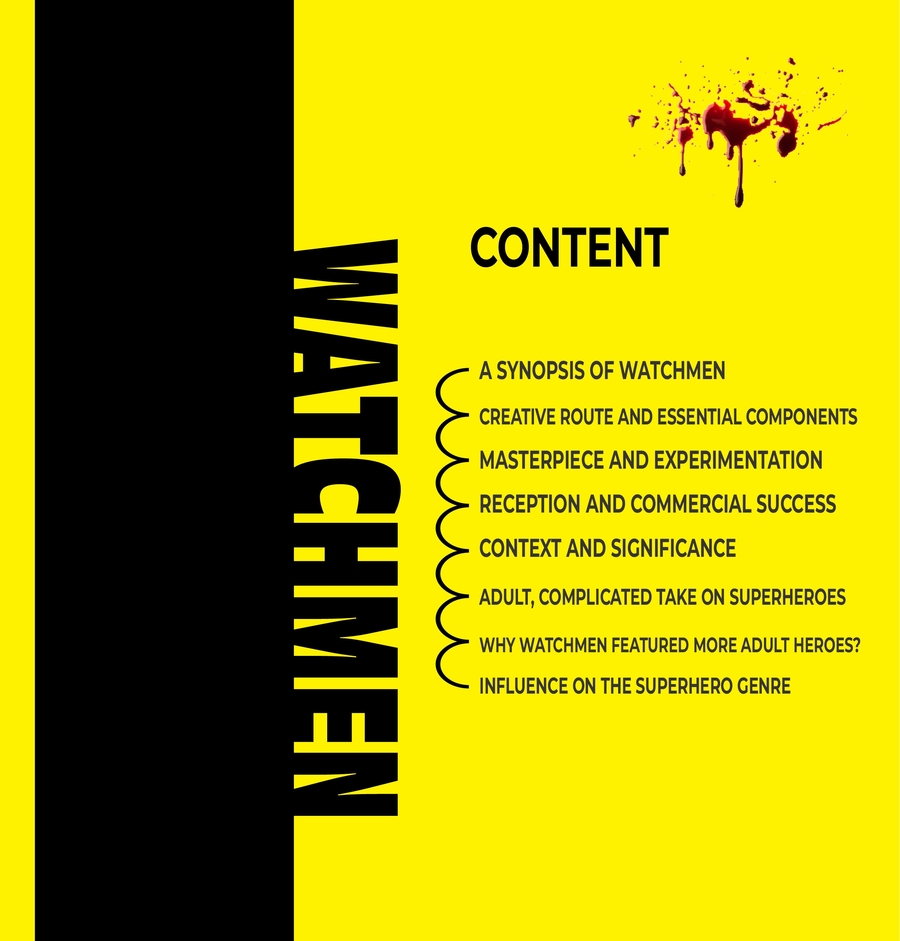
A SYNOPSIS OF WATCHMEN
Watchmen: The Deluxe Edition unifies the twelve-issue 1986–87 series into a single, uninterrupted story that takes place in a different 1985 when masked crimefighters have altered both daily life and world affairs. The story starts with the murder of Edward Blake, also known as «The Comedian,» and spans chapters 1 through 12. Rorschach’s compulsive investigation gradually uncovers a massive conspiracy related to the Minutemen’s past, the forced retirement of costumed heroes, and the growing Cold War tension between the US and the USSR.
From the comic book Watchmen, more precisely a passage describing Rorschach’s pessimistic view of society taken from his journal.
Richard Nixon and his advisors reviewing a possible nuclear war scenario during the Cold War tension between the United States and the Soviet Union
The book progressively reveals the damaged psyches of each of the main characters Rorschach, Nite Owl, Silk Spectre, Ozymandias, and Dr. Manhattan as the chapters alternate between present-day scenes, document-style backmatter, and lengthy flashbacks. However, the final chapters reveal a disastrous «solution» to the world’s conflict, leaving the reader to wonder if any of these heroes can still be considered heroic at all.
Discussing to the mysterious death of a man named Blake, who was found dead on the sidewalk below his apartment.
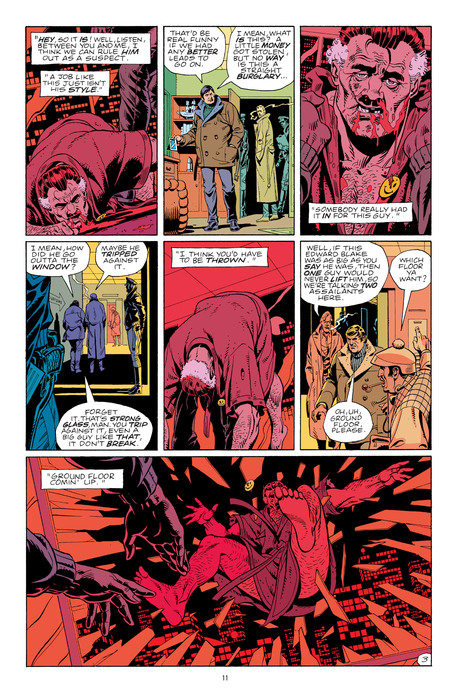

Rorschach and Nite Owl (Dan Dreiberg) examine the crime scene and make assumptions about the type of crime and possible attackers. This is a moral statement rather than a child’s fantasy.
CREATIVE ROUTE AND ESSENTIAL COMPONENTS
In terms of creativity, Watchmen eschews the conventional, plot-driven superhero adventure in favor of creating a thick mosaic with layers of political, historical, and psychological detail added by each chapter. Every issue has a nine-panel grid that works almost like a metronome, organizing time and rhythm to allow for the formal perfection of weaving together flashbacks, overlapping conversation, and visual motifs.
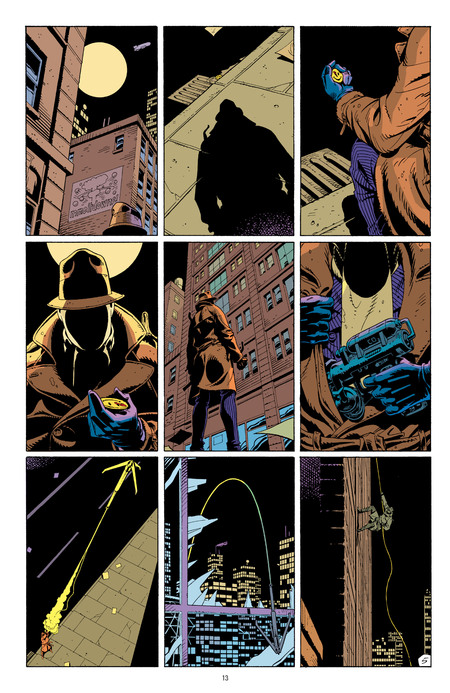

Some of the overlapping dialogues

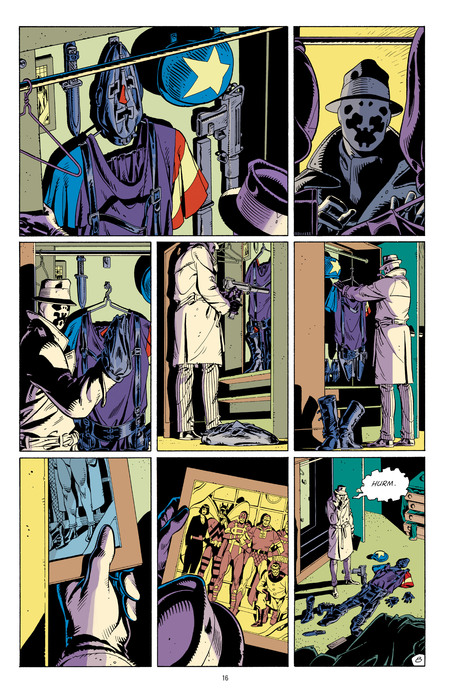
Some of the overlapping dialogues
The book employs strict composition, mirrored layouts, and recurring images (clocks, blood, reflections, advertisements, the pirate comic) to transform the superhero story into a complex system almost a mechanical «watch» that the reader must mentally put together. This is evident from chapter 1's opening fall of the smiley badge to later issues like «Watchmaker» and «Fearful Symmetry.»
Rorschach found the badge at the crime scene and identified the victim as Edward Blake.
A constantly shifting point of view, grounded, realistic violence and sexuality, fictional documents that read like archival material in between chapters, and the parallel «Tales of the Black Freighter» narrative that both reflects and distorts the main story’s themes of guilt, sacrifice, and moral compromise are all crucial elements of this approach.
MASTERPIECE AND EXPERIMENTATION
The series' use of the well-known vocabulary of superheroes as a starting point for a radical formal and thematic experiment is one of the reasons it is regarded as a masterpiece. Each chapter explores the potential of comics: one is organized around flawless visual symmetry, another around Dr. Manhattan’s nonlinear perspective of time, and still another on Rorschach’s gradual psychological disclosure via therapy sessions and police reports. Watchmen explore how far the superhero may be pushed toward literary fiction by fusing political theory, philosophy, and psychoanalysis in a way that is still readable and exciting, rather than rehashing genre conventions.
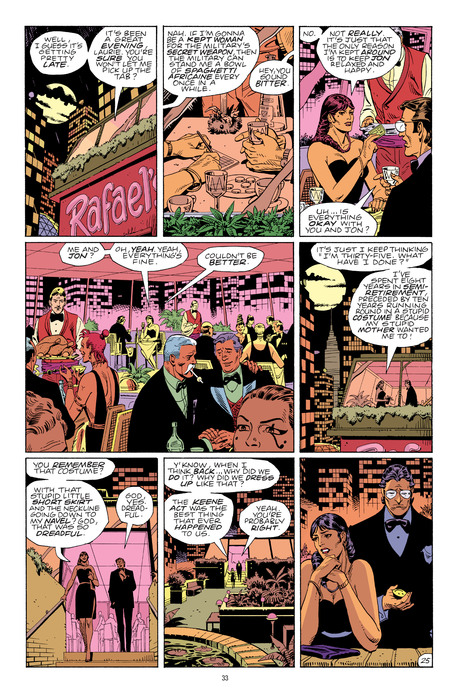

Conversation in a political environment
This experimentation is also emotionally charged: the novel runs the danger of alienating readers by depicting nearly all of the main characters as deeply broken or morally tainted, transforming the entire work into a test to see if the superhero myth can withstand touch with adult reality.
The end product is a comic that both makes use of and challenges the genre’s pleasures, allowing readers to appreciate the mystery, action, and spectacle while simultaneously being troubled by the implications those elements have for authority and accountability.
Many people consider Watchmen to be a masterpiece that redefined comic storytelling. Alongside comics like Maus and The Dark Knight Returns, it was a part of a late 1980s trend toward more adult, mature sensibilities. The series showed the literary possibilities of the comic book genre and was more than just an experiment. It was a revolutionary work. A darker, more complex period in superhero comics was sparked by its influence.
The Dark Knight Returns and Watchmen did break the comic book industry
RECEPTION AND COMMERCIAL SUCCESS
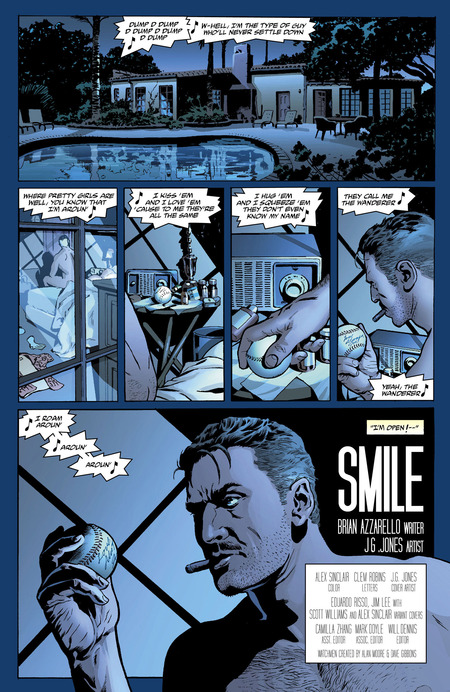
Watchmen was a critical breakthrough when it was first published, garnering significant accolades and being recognized not only as a «good comic» but also as a significant piece of modern literature. The idea that long-form superhero stories could be published and read like novels rather than disposable monthly issues was strengthened by its popularity as a collected graphic novel.
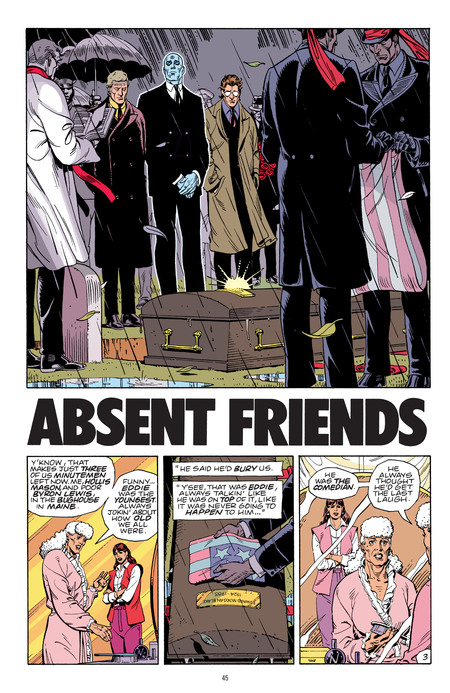
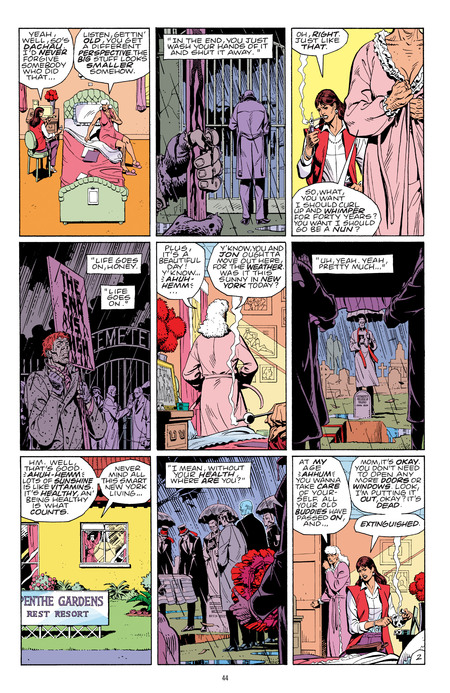
Graphic storytelling of Watchmen complex structure
By presenting the twelve chapters as a single, coherent experience, the deluxe edition upholds this tradition and strengthens its standing as a canonical work that academics, libraries, and critics see as a standard for serious graphic storytelling. Commercially, its endurance and numerous reprints demonstrate that readers still find value in its challenging characters and intricate structure, even when younger audiences come across it in a very different political environment.

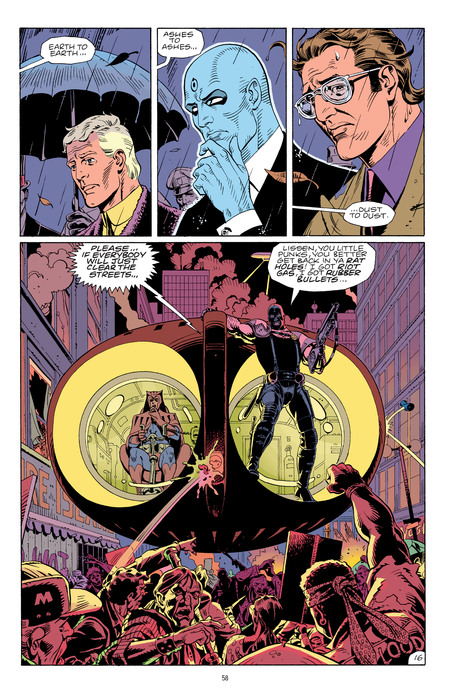
Graphic storytelling of Watchmen complex structure
However, the response has never been straightforward praise; while many readers applaud the craftsmanship, they disagree on its gloom, how it treats women, and how it affected superhero comics, which demonstrates how profoundly it engages and unnerves its audience.
CONTEXT AND SIGNIFICANCE
The late Cold War setting of the mid-1980s is the foundation of Watchmen, as chapters 1 through 12 continually remind the reader of nuclear clocks, street-level political disputes, protest posters, and newspaper headlines about impending global annihilation. Instead of treating costumed heroes as harmless fantasy, the novel imagines what would truly happen if characters like Dr. Manhattan existed and could be employed as strategic weapons by integrating superheroes into this volatile geopolitical setting.
Protest, posters and newspaper headlines about ideological propaganda against Watchmen
By directly connecting superhero mythology to actual politics, military tactics, and ideological propaganda, the existence of an almost godlike American asset shifts the entire global balance of power. It is significant because it suggests that the desire to produce heroes is inextricably linked to the desire to consolidate power by using the superhero story to represent concerns about surveillance, authoritarianism, and the ethics of «the greater good.» Watchmen thus become a cultural indictment of how societies search for saviors and how perilous that yearning may be, in addition to being a tale about former vigilantes.
ADULT, COMPLICATED TAKE ON SUPERHEROES
The superheroes (and former superheroes) are portrayed throughout the deluxe edition as being ethically dubious, mentally complicated, and involved in intricate interactions with the government, the media, and their own pasts. The reader is forced to consider if integrity alone is sufficient if it results in cruelty and social estrangement because Rorschach’s unwavering moral code is contrasted with his harsh methods and painful upbringing.
Heroism becomes a type of psychological reliance rather than an act of pure generosity as Nite Owl and Silk Spectre struggle with midlife crisis, sexual insecurity, and nostalgia and only discover their sense of identity when they put the costumes back on. Dr. Manhattan is a tragic and terrifying example of the paradox of unlimited power: as his understanding of time and existence becomes more abstract, his empathy for individual human lives diminishes. The concept of «heroic mastermind» is transformed into a critique of technocratic hubris by portraying Ozymandias as both clever and visionary and someone who feels he has the right to determine the fate of millions.
Nite Owl, Dr. Manhattan and Silk Spectre
These characters are more than just «dark» versions of heroes; they are mature in the sense that the novel refuses to provide straightforward moral solutions for any of their reasons, which are linked to pain, ideology, sexuality, and history.
WHY WATCHMEN FEATURED MORE ADULT HEROES?
Because the book directly challenges the oversimplified power fantasies and moral convictions of previous superhero comics, Atchmen’s protagonists are more mature. The show questions what kind of individual would actually put on a mask to patrol the streets, what psychological demands that may be revealed, and how governments and corporations might use such characters rather than depicting costumed crimefighters as harmless fun. The book’s historical narrative, in which superhero activity results in actual political repercussions like the outlawing of vigilantes and Dr. Manhattan’s direct involvement in Vietnam, demonstrates that heroism has costs that can no longer be disregarded or simply addressed at the conclusion of an issue.
Because the book directly challenges the oversimplified power fantasies and moral convictions of previous superhero comics, Atchmen’s protagonists are more mature. The show questions what kind of individual would actually put on a mask to patrol the streets, what psychological demands that may be revealed, and how governments and corporations might use such characters rather than depicting costumed crimefighters as harmless fun.
The book’s historical narrative, in which superhero activity results in actual political repercussions like the outlawing of vigilantes and Dr. Manhattan’s direct involvement in Vietnam, demonstrates that heroism has costs that can no longer be disregarded or simply addressed at the conclusion of an issue.
Doctor Manhattan and the Comedian in the Vietnam War.
INFLUENCE ON THE SUPERHERO GENRE
Watchmen have had a significant and conflicting impact on the superhero genre. On the one hand, it opened the door for more ambitious, long-form storytelling by showing publishers and creators that superhero comics could be serialized like novels, collected as prestigious editions, and considered seriously by academics and critics. Its popularity sparked a wave of «grim and gritty» heroes in the late 1980s and early 1990s, when authors reimagined, well-known characters using its realism, violence, and cynicism, resulting in harsher interpretations of Batman, the X-Men, and many other characters.
On the other hand, critics contend that many subsequent works mimicked the superficial elements blood, profanity, moral ambiguity without appreciating the intricate structure and political criticism that make Watchmen complicated, occasionally turning «adult» into «edgy» rather than really serious.


Because of the deluxe edition’s ongoing presence in reading lists and libraries, younger authors are not just copying it but also reacting to it by attempting to create real superhero stories that aren’t mired in enduring pessimism. In this way, Watchmen is both a challenge and a foundation: it established a standard for sophistication while also making the genre consider if deconstruction is the final stage or merely one phase in the development of superhero stories.
CONCLUSION
The twelve chapters in Watchmen: The Deluxe Edition turn the superhero from a juvenile power fantasy into a sophisticated medium for examining politics, psychology, and ethics. In addition to dealing with sex, murder, and death, the book’s protagonists are mature because they represent the paradoxes of power in a society molded by ideology, war, and media manipulation.
Watchmen is a sophisticated, mature take on superheroes that explores whether «saving the world» is ever innocent and whether any one person or even a small group of masked figures should be trusted with that responsibility by fusing a strict formal structure with in-depth character studies and a politically charged alternate history. Because of this, Watchmen is a perfect example for your project of how a medium that is typically associated with youthful escape can be utilized to create adult, critical art that nevertheless speaks to current discussions about power, accountability, and the narratives that societies talk about their protectors.
